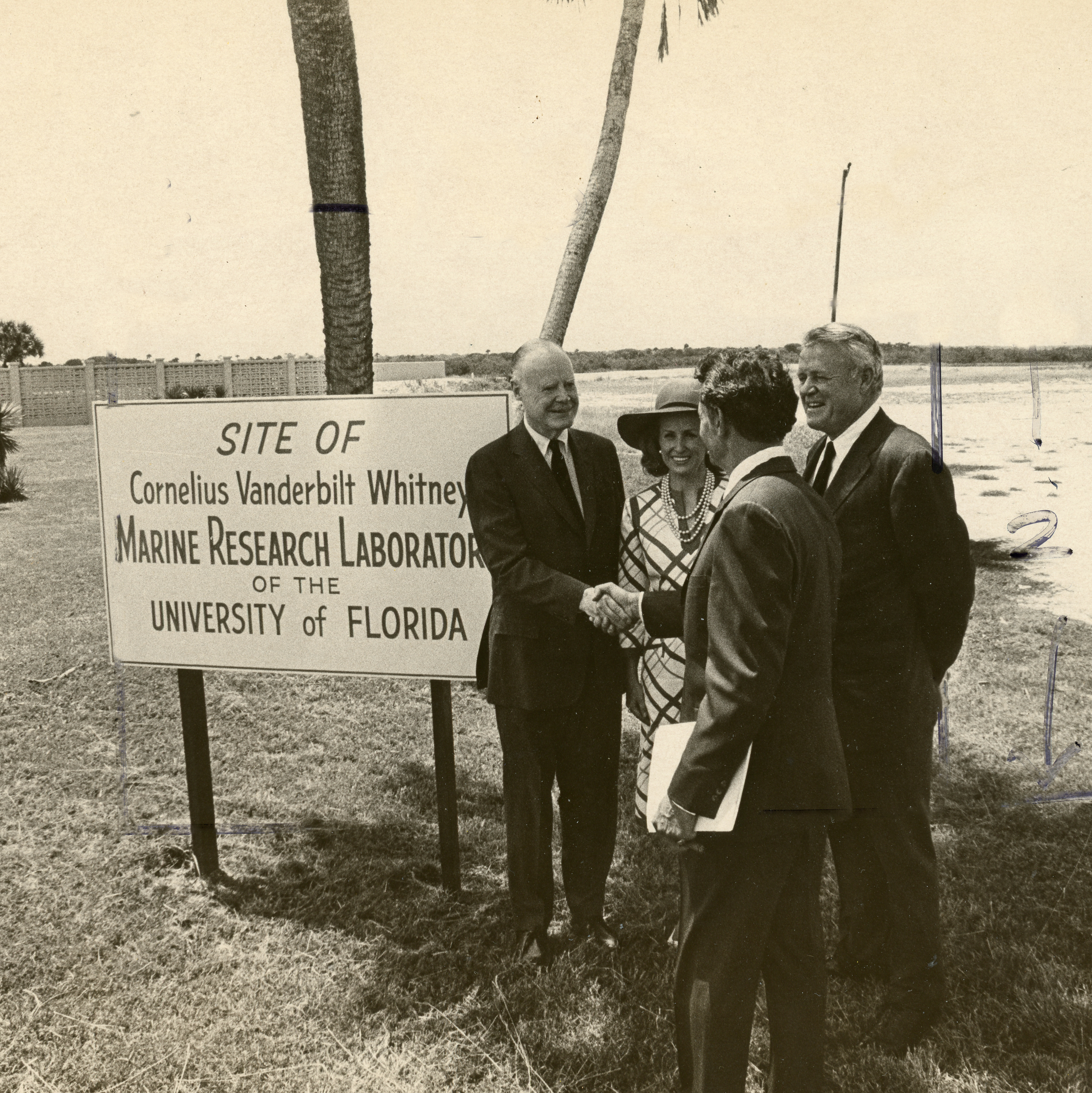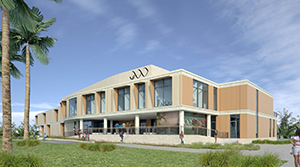 The Whitney Laboratory for Marine Bioscience
The Whitney Laboratory for Marine Bioscience

Let's take a look back about how it all began.....
The 1930s founding of the world’s first oceanarium, Marine Studios, (called Marineland after the 1940s) by Cornelius Vanderbilt Whitney, his cousin, Douglas Burden, and Count Ilia Tolstoy, laid the groundwork for the emergence of the Whitney Laboratory.
C.V. Whitney, a Truman administration official, founder of Pan American Airways, and producer of the movie, “Gone with the Wind,” also was a believer, along with his co-founders, in the need to educate. This educational aspect and the availability of captive marine animals at the Marine Studios, sparked a natural interest among marine biologists. A small research lab, constructed at the Studios after World War II, was booked for a full year by visiting scientists, before it opened.
Interest within the academic community continued into the ‘60s and 70s. Many University of Florida scientists in Gainesville, were enthusiastic about the opportunity of using marine animals for medically oriented research. After a 1968 “flu” epidemic killed performing dolphins, scientist Melba Caldwell, who had been conducting behavioral experiments with Marine Studios’ porpoises, approached Mr. Whitney to expand research.
In 1969, Dr. Samuel Gurin, new biochemist at the University of Florida (UF) and former dean of the medical school at the University of Pennsylvania, was invited to a gathering of scientists at Marineland. Cliff Townsend, on behalf of Mr. Whitney, proposed to Gurin that if he would head a marine research lab, Mr. Whitney was prepared to fund it.
Prior to coming to Florida, Gurin had used a year’s sabbatical to tour marine laboratories along the coasts of the United States and Canada. He found that no lab was devoted entirely to the use of marine animals as biomedical models to study basic problems in biochemistry, physiology, immunology, and human health and disease. Dr. Gurin began talking to officials at the University, Mr. Whitney, and other interested parties at Marineland. By 1972, newspapers around the country announced a “marriage” between the University of Florida and Marineland.
Mr. Whitney expressed his belief that serious scientific research into the oceans would be of enormous benefit in overcoming hunger and disease. He was particularly hoping that such research would produce a cure for cancer. Along with his partners, he donated 2.5 acres acres of land across the street from the attraction and personally donated $150,000 for the “culmination of a dream which started in 1936.” The University of Florida provided the balance of funds and the staff to complete the Laboratory.
The Cornelius Vanderbilt Whitney Laboratory for Experimental Biology and Medicine at the University of Florida" was dedicated on January 30, 1974. Dr. Sam Gurin was its first director along with full-time staff: Dr. William E. S. Carr, Dr. David and Melba Caldwell and Dr. Paul Cardeilhac. Early research included homarine metabolism, chemosensory reception, reproductive biology, and marine mammal studies, particularly biocommunication.
By 1976, the focus of research in the scientific world was turning to cellular and molecular biology. By 1987, the name of the lab was shortened to "Whitney Laboratory." The 1983 sale of Marineland by Mr. Whitney and founders to local businessmen shifted the focus of Marineland.
The Whitney Laboratory has added a conference hall, a sixteen-unit housing unit, an additional wing, a dock and boathouse and its own seawater system, independent of Marineland's. In August of 1998, the State Legislature appropriated $500,000 for the purchase of 3.5 acres of land which included a building now use for administration and support services.
-- Compiled by sources in the Whitney archives by Maureen Welch, 1999
The next big expansion to the Whitney Laboratory came in 2007 with the opening of the Center for Marine Studies (CMS) Building. Its facilities accommodate outreach programs for children and adults, a 272-seat auditorium, reception area, meeting and conference spaces, offices and teaching areas. Several years later in 2015 the Sea Turtle Hospital opened to provide rehabilitation, education and research for sea turtle conservation in Northeast Florida. The hospital rehabilitates debilitated and injured sea turtles, and, once healthy and cleared by the veterinarian, releases them back to their habitat. In 2018, Research Village Cottages were completed - the first housing expansion in 30 years.
Today, the lab continues its mission to:
The lab is currently composed of 11 faculty-led laboratories with over 70 staff members and 100 volunteers. Faculty include: Dr. Mark Martindale, Dr. David Duffy, Dr. Leonardo Ibarra-Castro, Dr. James Liao, Dr. Sandra Loesgen, Dr. Leonid Moroz, Dr. Todd Osborne, Dr. Joseph Ryan, Dr. Christine Schnitzler, Dr. Elaine Seaver, Dr. James Strother. Researchers at the lab are on the front lines of research in biodiversity, ocean health, marine chemistry, neuroscience, sensory biology, evolutionary genomics, embryology, and cell regeneration. Research areas include Aquaculture, Biology, Biomimetics, Chemistry, and Neuroscience.
Multidisciplinary research teams focus on:
What's Next?
Whitney Laboratory is expanding to a new technologically advanced teaching, research and conservation facility. This new Marine Research Institute Building and Sea Turtle Research Center and Hospital will bring high-technology to the shores of UF Whitney Laboratory’s valuable environmental location. Construction has begun, setting a new stage to amplify current research and train tomorrow's scientists!
The new Center for Biological Imaging and Discovery is poised to lead to the next discoveries by deploying exciting new imaging technology and training others on this emerging and important tool for science. The Whitney Lab seeks new opportunities to house as well as train advanced students in our areas of STEM specialization and more partnerships to continue this key work.
